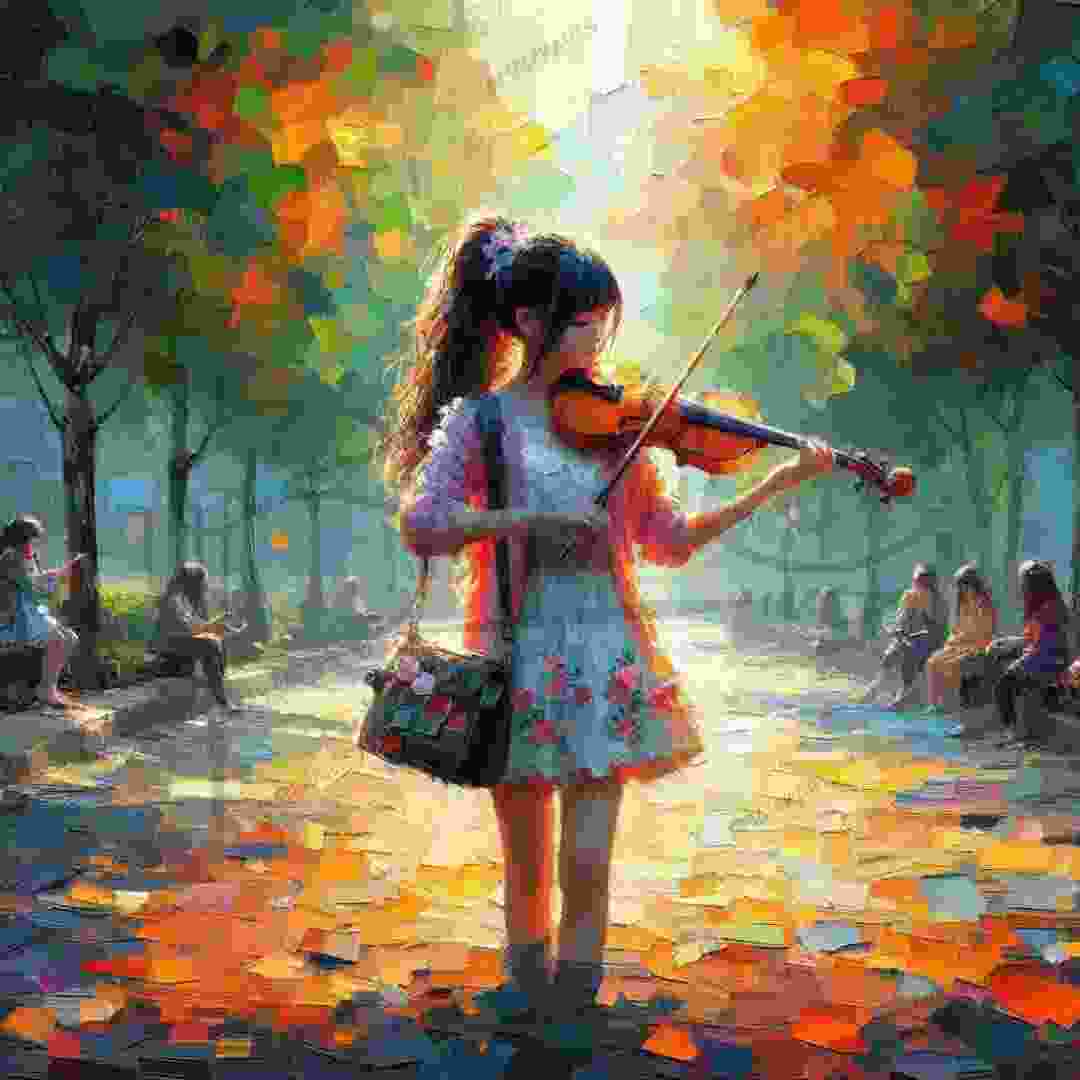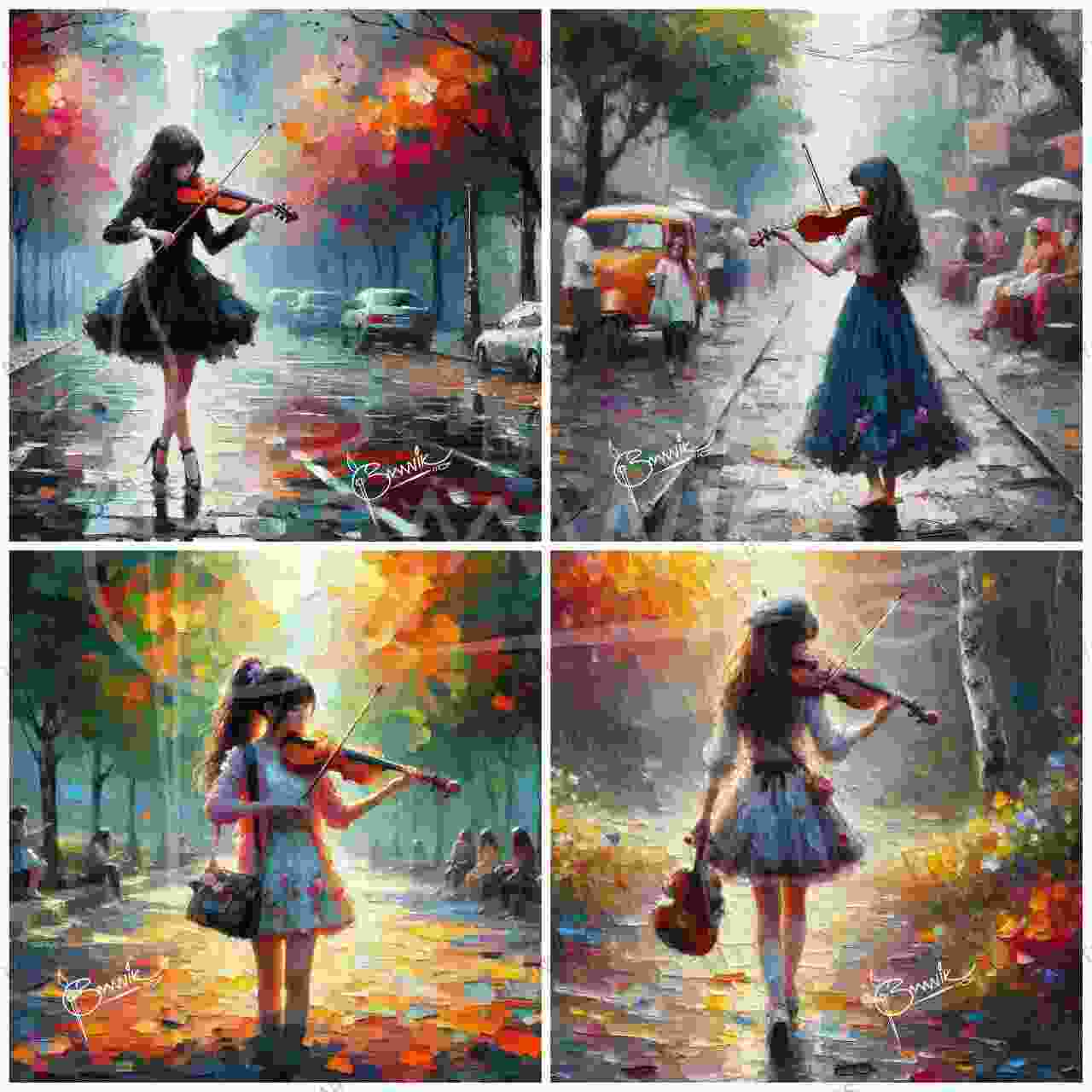Introduction
In the quiet corners of art studios, where brushes and palettes await their creators, lies a captivating world of expression. Here, the canvas becomes a stage, and the artist, a conductor. In this symphony of strokes, we delve into the mesmerizing realm of palette knife painting—a technique that dances between texture, emotion, and visual harmony.
The Young Violinist in palette knife painting

Our story begins with a young girl—a violinist—lost in her music. She walks along a sun-kissed road, her steps echoing the rhythm of her heart. The violin cradled against her shoulder is more than an instrument; it’s an extension of her soul. Her eyes, closed in concentration, absorb the world around her—the vibrant hues of the landscape, the whispering leaves, and the distant mountains.
The Palette Knife: A Bold Maestro
Enter the palette knife—a bold maestro in the orchestra of art. Unlike brushes, which gently caress the canvas, the palette knife wields power. Its blade slices through color, creating texture and movement. With each stroke, it leaves a mark—an imprint of the artist’s intent. In our young violinist’s world, the palette knife becomes her voice.
Emotional Color Palette knife painting

The emotional color palette unfolds before us. Fiery reds and oranges dance alongside cool blues and greens. The sun’s warmth kisses the girl’s cheeks, reflected in the golden strokes that weave through her hair. The violin’s wood resonates with earthy browns, while the sky above sings in cerulean and lavender. The emotional symphony crescendos—a blend of passion, longing, and determination.
Visual Harmony
Harmony emerges from contrast. The girl’s silhouette stands stark against the vivid backdrop. The road, a ribbon of ochre, guides her forward. The trees, their leaves a cacophony of greens, frame her journey. The palette knife orchestrates this visual dance—a balance of chaos and order. It whispers secrets of balance, urging the eye to linger on the girl’s delicate fingers, the violin’s curves, and the distant horizon.
The Road Less Traveled
Robert Frost once mused about the road less traveled. Our young violinist treads that path—a metaphor for life’s choices. The palette knife captures her footsteps—the rough texture of gravel, the softness of fallen petals. Each stroke tells a tale—a decision made, a dream pursued. The road curves, disappears into the unknown. Will she find an audience waiting at the end? Or is the music enough?
Texture: A Sensory Overture
Close your eyes and feel the canvas. The palette knife’s serrated edge leaves behind ridges and valleys. Run your fingers over the girl’s dress—the impasto strokes create movement, a tactile rhythm. The violin’s strings vibrate, almost audible. Texture becomes a sensory overture—a symphony for the fingertips.
Composition: The Final Movement
Composition—the grand finale. The girl’s placement, the road’s vanishing point, the balance of colors—it all converges. The palette knife rests, its work complete. The young violinist stands at the intersection of art and reality. Her music spills into the landscape, merging with the wind, the rustling leaves. The canvas breathes—a testament to her passion.
Conclusion
As we step back from the easel, we realize that palette knife painting is more than technique; it’s an invitation—to explore, to feel, to lose ourselves in strokes that transcend the mundane. Our young violinist’s symphony lingers—a melody etched in vibrant colors, emotional echoes, and the promise of roads yet traveled.
Dive into this world of palette knife painting. Discover how color, texture, and composition come together, telling the story of a young violinist’s passion—a symphony that resonates beyond the canvas.
this blog post explores the emotional journey of a young violinist through vibrant palette knife strokes. It discusses the interplay of color, texture, and composition, inviting readers to appreciate the art form on a deeper level.* 🎨🎻